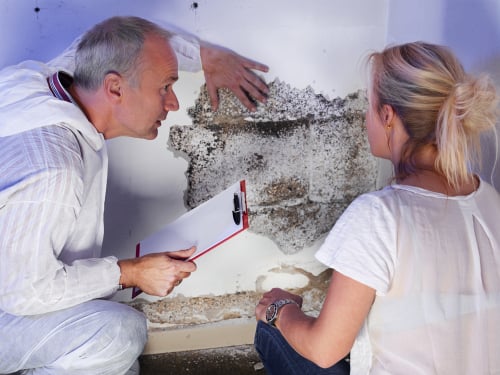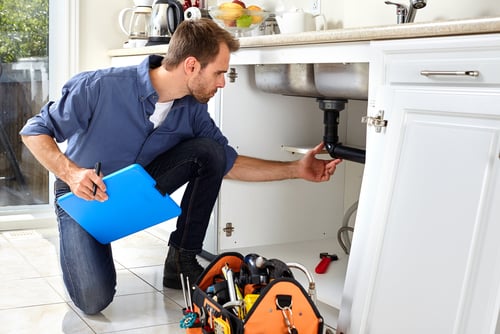As part of the rental property process, landlords must complete several different types of inspections. Although these take place at different times and for different reasons, the ultimate goal is to protect you, the tenant, and the property. In addition, detailed inspections help landlords discover maintenance issues before they become emergency repairs and ensure that tenants are following all lease terms. Continue reading below as we walk landlords through the types of inspections recommended by Philadelphia property managers and why they are vital to your success.
Types of Inspections for Your Rental Property
There are four primary types of inspections that every landlord should complete. While this may take some time, protecting your valuable investment is well worth the effort. In fact, routine inspections help save owners money by finding issues before they turn into major problems. Let’s examine these types of inspections in more detail below.
- Pre-Leasing Inspections
- Move-In Inspections
- Move Out Inspections
- Routine and Seasonal Inspections
Pre-Leasing Inspections
Pre-leasing inspections are a landlord’s first defense against potential issues. These types of inspections are used to evaluate the property’s overall condition before marketing. Typically, owners must undergo some sort of local inspection to obtain a rental license. If you employ a property management firm, they can assess the unit before these license inspections to save both time and money.

The key is to identify any safety or potential health hazards that could delay getting the property ready for a new tenant. Therefore, a pre-leasing inspection helps owners prioritize tasks and come up with a realistic availability date. In turn, allowing for more efficient and cost-effective maintenance. Some of the main items these types of inspections look for are –
- If the property was built before 1978, ensure the property is free of chipping or peeling paint which could contain harmful lead.
- Look for any signs of water damage, discoloration, or evidence of mold growth.
- Verify there are no known safety or building code violations
- All structural elements are secure and intact, including floors, stairs, walls, and the roof.
- For multi-family properties, any common areas, hallways, or stairways must be safe and free of clutter.
- Electrical, plumbing, heating, ventilating, and air-conditioning components function correctly as designed.
- Heat and hot water systems function appropriately
- Doors, locks, and any security features that protect the tenants and property are in proper working order
- Fully exterminate any pest infestations of rodents, termites, roaches, bedbugs, or other vermin
These types of inspections help keep owners on track to get their property legally compliant and ready for market. That said, create a list of notes for each room and list any condition issues found. Need help getting started? Check out our downloadable Rental Property Pre-Leasing Inspection Checklist.
Move-In Inspections
A detailed move-in inspection is vital to the rental process, and its importance cannot be overstated. These types of inspections occur when there is a change in tenants. Before a new tenant moves in, they walk the property with the landlord and note any pre-existing conditions. Anything discovered should be thoroughly documented on a detailed room-by-room checklist. Also, it is a great idea to use video or photographs to document existing issues further.
The reason being the move-in inspection will later be compared with the move-out inspection. This comparison shows landlords any damage that may be beyond typical wear and tear. From there, landlords may decide to withhold a portion of the security deposit.
 As we mentioned, a move-in inspection focuses on detail, and landlords should have a thorough report to file away with the lease documents. That said, the inspection checklist should have a dedicated section for each area, such as the ones below –
As we mentioned, a move-in inspection focuses on detail, and landlords should have a thorough report to file away with the lease documents. That said, the inspection checklist should have a dedicated section for each area, such as the ones below –
- Property Exterior
- Interior Systems
- Living Area
- Dining Area
- Kitchen
- Bedrooms
- Bathrooms
- Half Bath
- Laundry Area
- Basement
- Bonus Rooms
The move-in inspection is important for both tenants and landlords. Landlords need to ensure they hold tenants accountable for any damage incurred over the course of the lease. However, tenants want to ensure they do not get charged for something someone else may have left behind. Once the inspection is complete, both the landlord and tenant should sign it to acknowledge its agreed-upon contents. Looking for a comprehensive inspection checklist for your next tenant? Check out our user-friendly Move-In Checklist.
Move Out Inspections
When it comes to common types of inspections, move-in and move-out inspections are very similar. The goal is to determine the overall condition and evaluate if the vacating tenant damaged the unit in any way. Generally, it is a good idea to do this walk-through with the tenant. Thus, helping to avoid any misunderstandings or disputes over the withheld security deposit.

Just as you did with the move-in inspection, move-out reports require a detailed look at each area of the property. In addition, documenting evidence of damage with photos or video is a must. This is especially true if you intend to hold back any of the deposits. Detailed documentation ensures proper compliance with security deposit laws. A move out checklist typically includes –
- Property Address and Unit Number
- Tenant Contact Information and New Forwarding Address
- Move Out Date and the Date of Inspection
- A Section for Each Room or Area of the Property
- Space to Record Notes or Special Room Features
- Larger Blank Area for Documenting Comments
- A Place for Each Tenant and the Landlord to Sign and Date
The key to an efficient move-out process is communication and attention to detail. Moving is a stressful time for the tenant, and thus, clearly communicating the tenant’s move-out responsibilities and scheduling of the inspection is critical. Also, to help ensure a smooth transition, avoid these common mistakes –
- Do Not Make Premature Promises– Never discuss how much security deposit a tenant will receive before completing the inspection.
- Get Your Facts Straight– Ensure the inspection is easily understood and document clear evidence of condition issues through notes and photos.
- Do Not Skimp on Documentation – The inspection sheet is proof of property damage along with what repairs were needed. Therefore, detailed and accurate records are essential.
Sample Move-Out Checklist
Unsure how to create a move-out checklist for your rental property? Check out this printable sample of a move-out inspection checklist to get you started.
Routine and Seasonal Inspections
Inspecting the property as tenants move in and move out is a standard procedure that most landlords understand the value of. However, these are not the only types of inspections that are beneficial to landlords. For example, depending on the age of the home, it is a good idea to perform routine inspections once every 6 months.
The idea here is to inspect the interior and exterior of the property to look for any potential maintenance issues, safety concerns, or lease violations. Also, this is the ideal time to plan to complete some preventative or seasonal maintenance such as an HVAC tune-up or cleaning the gutters.
 That said, these types of inspections can be seen as a disruption to a tenant’s life, and therefore, landlords must approach them the right way. Check out our top tips below –
That said, these types of inspections can be seen as a disruption to a tenant’s life, and therefore, landlords must approach them the right way. Check out our top tips below –
- Give Proper Notice to Enter – Before conducting an inspection, provide the tenants with a minimum of 24 hours’ notice but, ideally, as much notice as you can. When inspection day arrives, call the tenant while on your way and always knock before entering. Their full cooperation is key.
- Be Respectful of Personal Items – Do not move, photograph, or touch the tenant’s personal belongings without permission. That said, if an item is in the way, politely ask the tenant to move it as needed.
- Avoid Conflicts – Avoid face-to-face conflict at all costs. If you and the tenant disagree, do not argue. Instead, continue to work on resolving the issue professionally and calmly.
Protect Your Rental Property with Professional Management
Rental owners cannot be everywhere at once. Therefore, if you own more than one property, juggling vital tasks like inspections is a challenge. Luckily, the local rental property managers at Bay Property Management Group are willing and able to assist property owners in tackling their business’s daily operations.
Our team of property managers and in-house maintenance technicians understand the vital role that different types of inspections play in your overall success. They are essential to preserving the property, ensuring tenant satisfaction, and lowering repair costs through early detection and preventative maintenance. So, whether it is the initial pre-leasing inspection or holding tenants accountable for damage, Bay Property Management Group handles every step of the process. So give us a call today to learn more about the benefits of full-service rental management.
